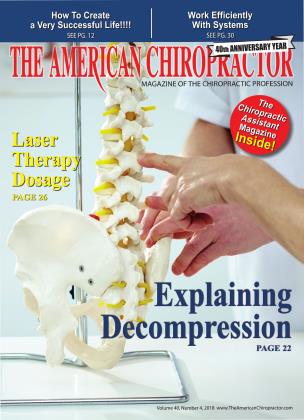WFC Calls For Focus On Conservative Spine Care As New Study Reveals Millions of People Harmed By Wrong Treatments For Low Back Pain.
NEWS
WORLD FEDERATION OF CHIROPRACTIC
WFC President, Dr Espen Johannessen has called for greater utilization of chiropractic following the publication of a damning new study on low back pain treatments.
Millions of people across the world are getting the wrong care for low back pain, with many treatments causing harm and even early death, a global review published has confirmed.
The review was conducted by over 30 leading experts in countries across the world, including two chiropractors: WFC Research Council member Professor Jan Hartvigsen and Dr Alice Kongsted. The study, published in The Lancet today, highlights that many health systems are wasting valuable healthcare resources by continuing to fund tests and treatments known to be ineffective and even harmful.
The series of three papers on low back pain notes that standardized approaches to managing low back pain are commonly misconceived and outdated, and best practice is frequently ignored.
Worse still, the series adds, the interests of companies and healthcare professionals, who stand to gain financially from promoting unproven medicines or unnecessary scans and surgery, are often given priority over those of patients.
Speaking today, Dr Johannessen, emphasized that non-drug, non-surgical approaches must be the standard of care in the management of low back pain.
“This international study is a wake-up call for all health professionals, including chiropractors, caring for back pain sufferers,” he said. “It is not simply about avoiding the use of drugs and surgery, although we can see from this report that they are often not the best approach for most people. It is also about ensuring that patients are not exposed to unnecessary tests and that chiropractors and others take note of evidencebased guidelines.”
What is going wrong - the facts:
• Misconceptions about best practice among healthcare professionals, funders and even patients themselves result in many people getting the wrong care:
• There is no evidence that routine back imaging improves outcomes, but patients referred for imaging are significantly more likely to receive unnecessary care and surgery
• US$12.8 billion was spent on spinal fusion surgery in the USA in 2011, despite it having significant failure rates and there being little evidence to support its use for most back conditions
• Unenlightened compensation and workplace policies are driving unnecessary sickness absence and high social costs:
• Sustainable return to work rates of people with chronic low back pain vary widely between countries, ranging in one study from 22% in Germany to 62% in the Netherlands
• Rates of benefit claims related to back conditions are 60 times higher in the USA than in Japan
• Low back pain is contributing to poverty and inequality:
• A study of fanners in rural Nigeria found that, in one year, over half had been forced to reduce their workload due to low back pain
• In Australia, the median wealth of people aged 65 who retire early because of low back pain is just over AU$5,000, compared to more than AU$330,000 for those who remain in the workforce
“In many countries, for example, opioids that have limited positive effect but carry substantial risk of addiction, overdose and even death are routinely prescribed for low back pain. In the USA, some 60% of people presenting for low back pain in emergency departments are prescribed opioids. As a result, people are dying unnecessarily every day from overdoses.”
“Our review calls for this colossal waste of precious lives and resources to be stopped. As lower-income countries respond to this rapidly rising cause of disability, it is also critical that they avoid the waste and harm that these misguided practices entail.”
Dr Johannessen concluded: “For some, adapting to recommendations contained in this study will be challenging. Like all health professionals, chiropractors must engage in critical evaluation of what works best, and be prepared to change in line with what evidence is telling us. Safety, effectiveness and cost-effectiveness are all critical considerations as we provide chiropractic care to create healthier societies and many of the findings reflect what chiropractors have been advocating for many years.
“This series of papers truly demonstrate that as collaborative partners, chiropractors are well-equipped to make a significant contribution in the management of low back pain.”
 View Full Issue
View Full Issue






